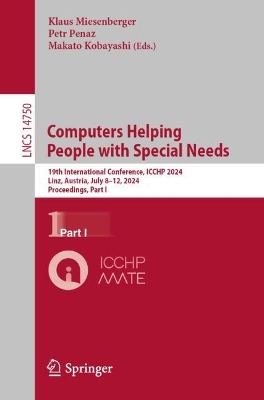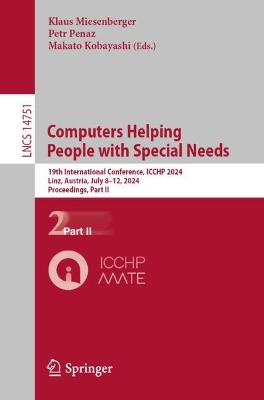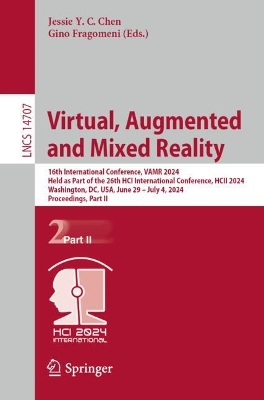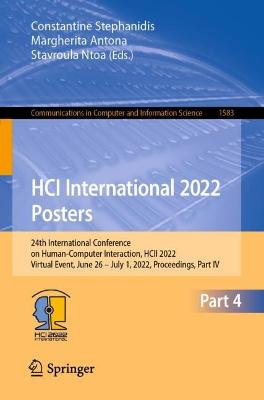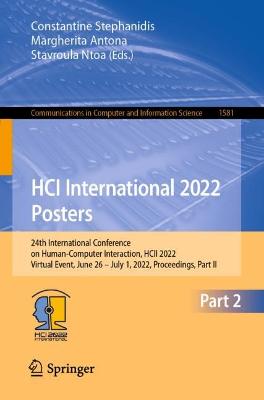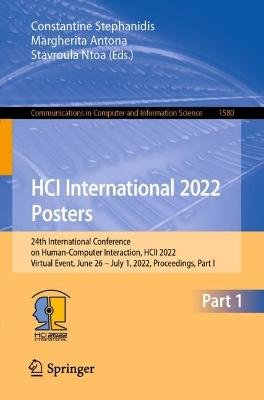Computers Helping People with Special Needs
 portes grátis
portes grátis
Computers Helping People with Special Needs
18th International Conference, ICCHP-AAATE 2022, Lecco, Italy, July 11-15, 2022, Proceedings, Part I
Manduchi, Roberto; Miesenberger, Klaus; Covarrubias Rodriguez, Mario; Kouroupetroglou, Georgios; Penaz, Petr; Mavrou, Katerina
Springer International Publishing AG
06/2022
557
Mole
Inglês
9783031086472
15 a 20 dias
890

